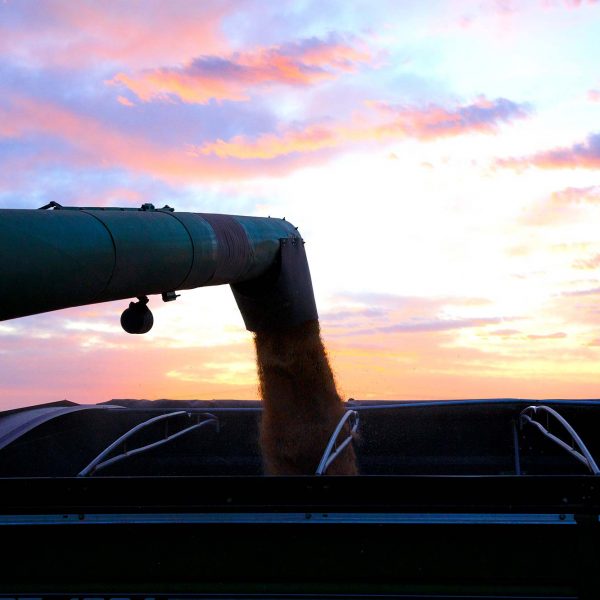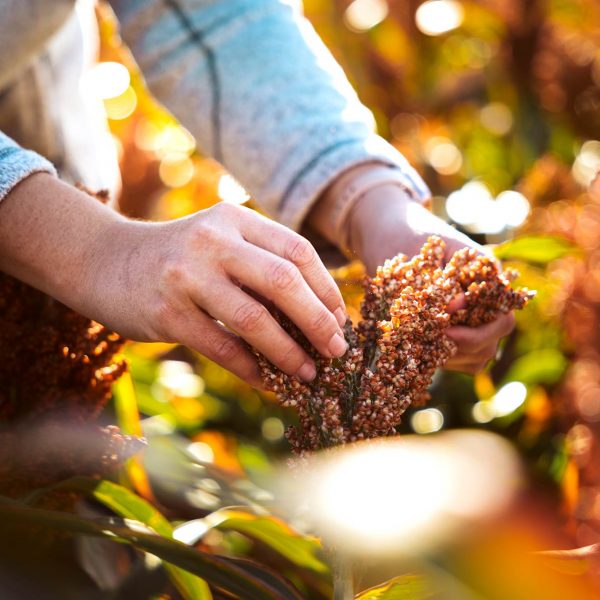Grazing Sorghum Stover Following Grain Harvest
MAFG/High Plains Journal – August 2023
Brent Bean, Sorghum Checkoff Agronomist
Cattle grazing of stover following grain harvest is an important component of many cropping systems. One of grain sorghum’s many strengths is that the remaining stover can be utilized for grazing or hay harvesting or serve as protective groundcover during the winter months. Sorghum’s high ratio of leaves and palatable stems make for an excellent cattle feed choice and the tall residue height allows access to the stover even in snow-prone areas.
For pregnant cows in mid to late-gestation, grain sorghum’s energy and protein levels provide adequate support. However, supplements may be necessary for late-gestating heifers. In a study conducted at Oklahoma State University (okstate PSS-2607), the average crude protein in the residue of nine sorghum varieties following grain harvest was 9% at one location and 10.4% at a second location. Total digestible nutrients were approximately 58% at both sites.
In terms of stover quality, a general rule suggests that fields with low grain yield often have higher quality because more nutrients and sugars remain in the stems and leaves rather than being allocated to grain production.
To determine stocking rate, growers should estimate the available forage. A rough calculation for estimating total dry stover after harvest can be obtained by multiplying the number of harvested bushels by 60. However, this is an approximation, and the actual forage amount may differ significantly depending on the sorghum hybrid. Additionally, not all stover should be consumed by cattle; some residue must be left as cover to protect the soil. A conservative estimate is to multiply the number of bushels harvested by 10 to calculate the amount of palatable and high-quality forage that cattle can eat. By using this method, a field yielding 80 bushels of grain should have approximately 800 pounds per acre of quality dry forage for grazing. Growers should also note that under prolonged grazing, the quality of the stover will decrease as cattle first consume the leaves and more palatable portions of stalks, in addition to weather having a deteriorating effect over time.
Compaction from grazing is a concern for some growers. Yet, studies from the University of Nebraska (UNL EXT EC278) have shown no reduction in yield to corn or soybeans following grazing of stover in both no-till and ridge-till systems. The top 3 inches of soil may be somewhat more compacted compared to ungrazed areas, reducing water infiltration, but this compaction can largely be avoided by not allowing cattle to graze late into the spring when conditions become muddy. In addition, not permitting overgrazing and leaving a significant amount of residue on the surface will go a long way in preventing compaction issues.
Most of the nutrients that cattle consume, which would otherwise stay in the field, get returned to the soil via manure. Typically, managers withdraw cattle from the field after about half the stover has been consumed, leaving the rest to enhance the soil’s fertility.
On a cautionary note, growers should be aware of the risk of prussic acid (cyanide) and nitrate poisoning. If grain sorghum is harvested prior to a killing freeze or if glyphosate was not used to kill the plants, any new growth potentially can contain high amounts of prussic acid. Cattle should be kept out of these fields until a hard freeze has killed the new growth. Growers should wait five to seven days after a killing freeze before allowing cattle into the sorghum field to provide sufficient time for the prussic acid to dissipate.
The risk of nitrate poisoning is generally less when grazing sorghum stover compared to feeding hay because nitrates accumulate primarily in the lower portion of the stalk. Grazing cattle will first consume the leaves and upper part of the stalk, where nitrate concentrations are lower. Nitrate accumulates in plants that have been stressed due to any number of factors. If nitrate levels are high prior to a killing freeze or a glyphosate application, they will remain high in the stover after grain harvest. However, under normal growing conditions, nitrate levels in sorghum stover are generally low.
While the risk of prussic acid and nitrate poisoning in cattle grazing sorghum stover is generally minimal, if any potential risk factors for these conditions exist, growers are strongly advised to get the forage tested prior to grazing. This proactive approach ensures the safety and well-being of the grazing cattle. For more information on these topics, growers can refer to the Agronomy Insights page on the Sorghum Checkoff website (https://www.sorghumcheckoff.com).





